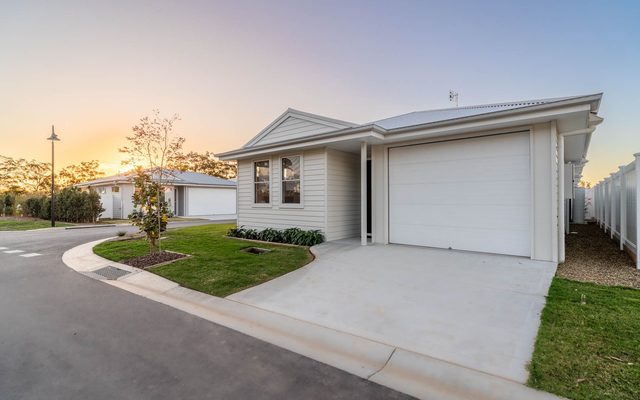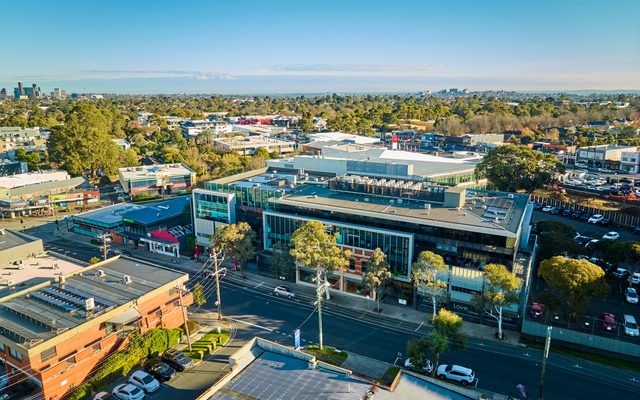This article is from the Australian Property Journal archive
CONFIDENCE in Australia’s residential property market is at its highest level in two years, according to NAB, which is expecting the supply and demand imbalance to continue to support both house prices and rents in the near term.
NAB is expecting Perth to lead house price growth in 2024 and 2025, expecting growth of 13.7% and 6.2% respectively, after it led all comers in in 2023.
All capital cities are expected to see solid growth. Brisbane will see 8.9% this year, slowing in 2025, while Adelaide is tipped to see 7.4% and 4.6%.
Sydney will see 4.5% growth and Melbourne 2.5% in 2024, and both will see 3.7% gains in 2025.
“NAB’s views on the property market are largely unchanged. While price growth has slowed the significant supply/demand imbalance in the housing market is likely to continue to support both prices and rents in the near term, despite the high level of interest rates and other pressures on households,” NAB said.
“More broadly, the economy and labour market have been resilient, but we expect weak growth to persist in the near term and the unemployment rate to rise in 2024. That should see the Reserve Bank of Australia begin to ease rates from around November, taking the cash rate to around 3% by end 2025.”
The past week’s consumer price index data showed the rate of annual growth in inflation accelerated in the year to April, which for some made the prospect of a rate cut from the RBA any time soon very remote. Markets now have the RBA keeping the cash rate on hold at 4.35% at least until May next year.
NAB’s latest Residential Property Index rose to a reading of 57 in the March quarter, up from 46 the previous quarter and 9 at the same time last year. The index, which surveys property professionals, is measure of market sentiment and is now at its highest level in two years. A score of 0 is considered neutral.
Outcomes were mixed across the states and territories. The state index rose everywhere except for Western Australia, although it remained at a very high 80, and the Northern Territory was neutral. States that were previously in negative territory have seen improvement; the index for the ACT made significant gains (up to 0 from -42), as did the index for Tasmania (up to -20 from -63), though it remains negative.
Confidence levels continued to increase and did so more sharply than in the previous quarter. NAB’s one-year confidence measure lifted to 68 (up from 55), and the two-year measure to 67 (from 56). Housing market confidence levels are now at their highest levels in two years and well above long-term survey averages (37 and 45 respectively).
The majority of property professionals characterised rental markets in their local areas as undersupplied. Survey forecasts for rent growth in the next 12 months and two years’ time were 3.8% and 4.3% respectively. The average survey forecast for rents in the next 12 months is positive in all states, and growth is expected to accelerate in Victoria, Queensland, South Australia, and Tasmania, while slowing elsewhere.
The overall market share of all first home buyers (FHBs) in new property markets fell to its lowest level since 2016, at 29.3%, while the market share of sales to owner occupiers (net of FHBs) reached an 11-year high of 42.2%.
More than three-quarters (76%) saw construction costs as a barrier to starting new residential projects, particularly in Victoria (88%) and NSW (79%). Around half of survey respondents identified obtaining planning permits as a barrier to starting new projects. Fewer property professionals saw rising interest rates as a barrier (down from 55% to 39%)
Foreign buyer market share to fall
The market share of foreign buyers in new housing markets fell slightly, from a six-and-a-half-year high of 11% to 10%, but still above the long-term survey average of 9.1%. This reflected falls in market share in NSW (12%) and WA (11%), market share increased in Queensland (7.6%) and was steady in Victoria (10%).
Co-founder and group managing director of China’s largest portal for overseas property, Juwai IQI, Daniel Ho, said Chinese buying enquiries for Australian residential property surged by 156% in the December quarter, compared to a year earlier, before a 6% slip in the first quarter were down 6%.
“That shows that demand remains elevated, but the exceptional post-COVID growth has moderated,” he said.
Foreign buyer interest in Australian property is higher than in recent years, albeit coming off a low base during the pandemic, during which there was very little foreign buying.
Ho said Foreign buyers accounting for about 10% or 11% of transactions “seems about right” given the relatively high levels of immigration and the high numbers of foreign students in the country.
“You would expect the foreign buyer share to decline by a couple of points in the year ahead, if the government is successful at cutting net inbound migration in half over the next two years,” he said.




